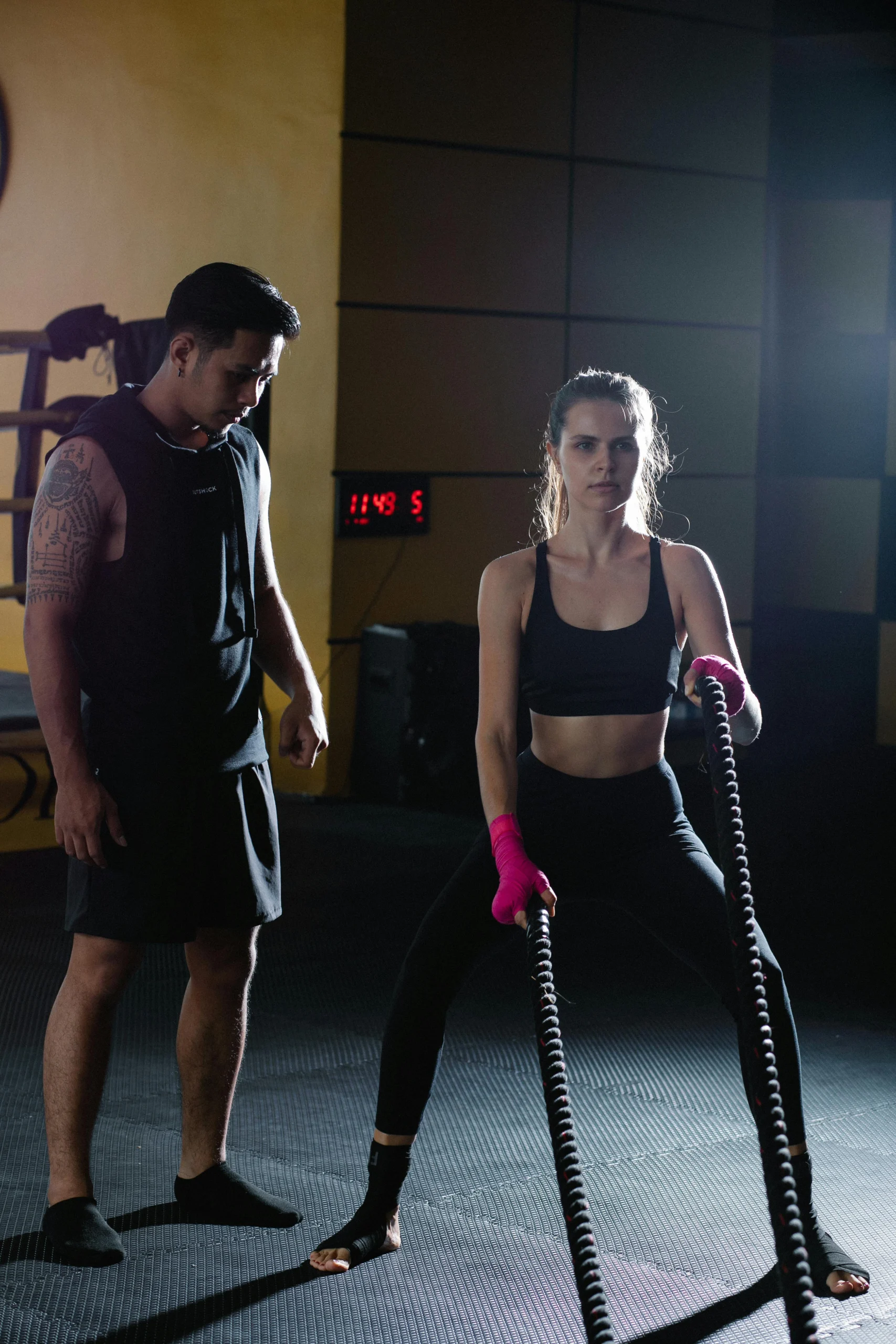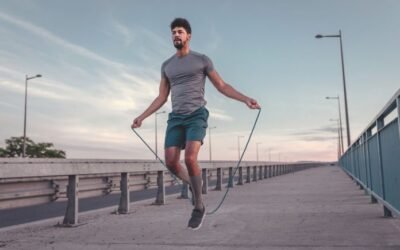As personal trainers, recognizing and adapting to the diverse body types of our clients is crucial for effective and safe strength training. Different anatomical structures, such as limb length, can significantly impact exercise performance, particularly in strength training with heavy weights. This guide focuses on customizing exercises like the squat to suit various body types, ensuring a safe and effective workout for every client.
Understanding Body Type Variations in Strength Training
Tall Individuals, Short Torsos, and Long Legs: These body types face challenges in achieving full range of motion in exercises like squats. Common issues include limited hip sinking leading to forward-leaning torsos, heels lifting off the ground, and excessive lumbar spine flexion. To address these, focus on improving mobility at the ankle and hip joints and seek congruency between torso and shin angles.
Barbell Front Squat for Tall Body Types
Benefits: The barbell front squat is a key exercise for tall individuals. It encourages a vertical torso, minimizing lumbar strain. The front position of the bar requires simultaneous knee and hip flexion, promoting deeper squats while maintaining an upright posture. This variation is ideal for those with taller frames, as it aligns the body in a way that is biomechanically advantageous.
Key Focus Points: To perform the front squat effectively, it’s crucial to have good dorsiflexion (the ability to bend the foot upwards), wrist and shoulder mobility, and thoracic spine extension. This exercise is not only athletically demanding but also joint-friendly, making it a superior choice for tall clients who may struggle with traditional squats.
Considerations for Long Shins and Short Stature: Clients with longer shins may find deep squats challenging due to limited dorsiflexion and a restricted range of motion. Conversely, those of shorter stature can leverage their smaller range of motion for increased time under tension, which is beneficial for muscle growth and strength.
Slow, Eccentric Paused Back Squat for Long Shins/Short Stature
Execution Strategy: For clients with long shins or a shorter stature, the slow, eccentric paused back squat is an excellent variation. It focuses on the eccentric (lowering) phase and includes pauses to maximize load bearing time and minimize momentum. This approach requires sustained muscle tension and active muscle support around the joints. It leverages the law of irradiation, which enhances joint stability through coordinated muscle contraction. This variation is especially beneficial for those who may struggle with traditional squat techniques due to their body proportions.
Implementing Customized Training Strategies
- Initial Assessment: Begin with a thorough assessment of your client’s body type, focusing on limb length and proportions. Understand their unique biomechanical strengths and limitations.
- Squat Modifications: For each body type, modify the squat to accommodate their structure. This might involve altering foot placement, squat depth, and the type of squat (front, back, box squats).
- Exercise Selection: Choose exercises that complement the client’s body type. For example, taller individuals might benefit from split squats or lunges that require less depth but still target key muscle groups.
- Focus on Mobility and Stability: Emphasize exercises that improve joint mobility and muscle stability, particularly for clients who struggle with certain movement patterns due to their body type.
- Progressive Overload: Gradually increase the intensity and complexity of exercises as your clients become more comfortable and their bodies adapt to the training.
- Monitor and Adjust: Continuously monitor your clients’ form and performance, making necessary adjustments to their program based on their progress and feedback.
- Educate Clients: Help your clients understand the rationale behind each exercise selection and modification. This knowledge can empower them and improve adherence to the training program.
Personalizing strength training according to individual body types is not just about enhancing performance; it’s also about ensuring safety and maximizing results. As trainers, our role is to recognize the unique physical characteristics of each client and adapt our training methods accordingly. By doing so, we can create inclusive, effective, and safe workout environments that cater to the diverse needs of our clientele. Remember, strength training is not one-size-fits-all; it’s a nuanced practice that requires attention to individual differences.




